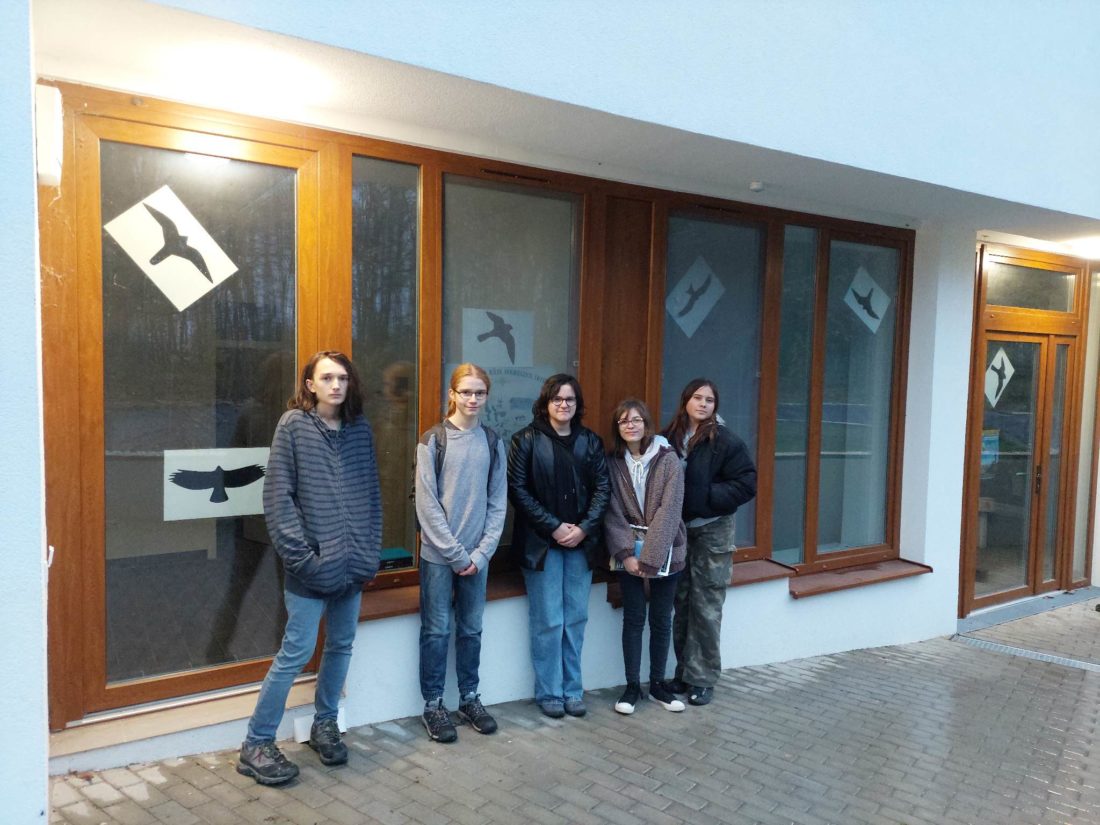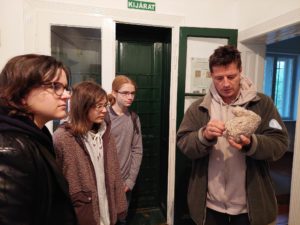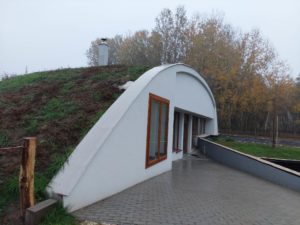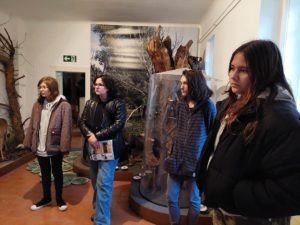
HILL HOUSE – SPHERE HOUSE
This afternoon (11/16) we set off in a small group to the Tisza-valley exhibition house in Szatymaz. The permanent exhibition of the visitor center presents the protected natural values of the Lower Tisza region. We gained a lot of new information, we got to know the concept of kurgan. The word kurgan is of Turkish-Tatar origin, meaning grave mound. Graveyards where builders built a mound towards the pit grave are called this. However, the kurgan we visited does not hide such surprises. Their builders came up with this name, which roughly corresponds to the concept of a hill house. We also learned how consciously it was built. A lake was created next to the building, which is precisely oriented according to the course of the Sun. Next to the lake, the steel construction was completed, on which the layer of earth left when the lake was created was placed after proper thermal insulation. This is how grass and flowers cover the roof of the building. This can be seen as a Hungarian hobbit house. It is a very homely, friendly building in harmony with nature. Its heat management is excellent, even in the hottest days the temperature does not rise above 22 degrees, and now, while it was foggy, windy, rainy and 6 degrees outside, we could enjoy the heat of plus 17 degrees inside. This building, together with the lake it forms a perfect circle from above. We were also able to listen to a natural science presentation about the flora and fauna around the Fehér lake. Uncle Krisztián also presented some animals in detail. We learned that the spoonbill actually belongs to the stork family. We learned interesting facts about the ermine, which grows white fur after molting in the winter and unfortunately becomes prey for birds of prey. This “outfit” was invented for him in the winter snow, but he cannot adapt to the warming as quickly as the atmosphere changes. He explained the special wildlife of the Szeged wave fields. The beaver, for example, is unfortunately no longer native to Hungary, attempts were made to introduce it in Germany, which was not successful for a very long time. They realized that beavers go where their families are. If one individual is moved from one family, they swim hundreds of kilometers in order to find their family. Since they realized this and resettled the whole family, they accepted their place. Unfortunately, due to the weather, we did not have the opportunity to observe the cranes being pulled in. Thank you for this wonderful program.
Török Fanni, Faragó Hanna, Kohári Bánk Sz3 group





